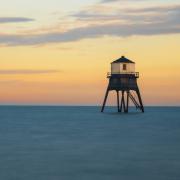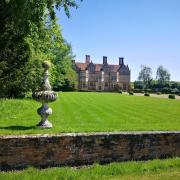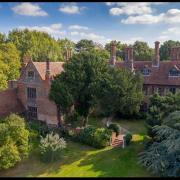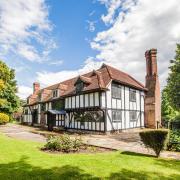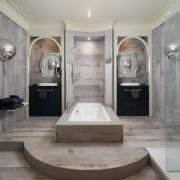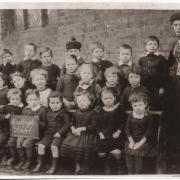This fine Elizabethan mansion is owned by English Heritage and has a fascinating history as a prisoner of war camp in the second world war
Hill Hall in Epping, located in Theydon Mount, was built on the site of an earlier hunting lodge that stood in the 11th century. Hill Hall was acquired by diplomat Sir Thomas Smith in 1556 where he continued to make changes throughout his lifetime. The current Elizabethan manor house with Renaissance influence that we see today replaced the 12th century building that stood before it. Though part of Hill Hall is managed today by English Heritage, it is privately owned and divided into houses and apartments, some of whose images have no doubt graced these pages in the past.
Hill Hall is of particular architectural note for two reasons. Firstly, for its giant columns that decorate the front of the house rising to two stories, as well as the impressive friezes (the decorations on the masonry). There are also some remarkable murals inside the house that have stood the test of time. These date back to the 16th century and feature mythical and Biblical figures. These are all the more precious as they withstood a harsh fire at Hill Hall that rampaged through the building in 1969.

Sir Thomas Smith has been described by authors Paul Drury and Richard Simpson, who wrote a book on Hill Hall, as a ‘Tudor intellectual’. Apparently, Smith was not born into wealth but married Philipa Wilford who had been left the Hall by her late husband, Sir John Hampden of Buckinghamshire. Smith was educated at Queen’s College Cambridge where he later became a fellow and then a professor. A protestant convert, Smith became a close adviser to Queen Elizabeth I and ambassador to France. Throughout his lifetime Smith made numerous adjustments to Hill Hall. There has been discussion that as the house passed to him from his wife’s late husband that Smith was keen to make it very much his own - possibly more his than hers.
Hill Hall is also thought to have been Smith’s favourite home (he had a few) for many reasons including the fact that it sat atop a hill and presumably had good air, ventilation and views of the surrounding south central Essex countryside (which would have been a great deal more wooded 500 years ago.) The building works were phased over two periods when his work schedule permitted. Given that Smith was ambassador to France three times, he would have been somewhat busy. In 1572 Sir Thomas was appointed Chancellor of the order of the Garter. This is an important position chosen by the sovereign (in this case Queen Elizabeth I) as a token of their gratitude for personal loyalty and service.
Smith was thought of as reliable too. As was the norm amongst aristocratic parents, Edward de Vere was sent to live with Sir Thomas. Think of it a little like modern-day boarding school. Sir Thomas was his surrogate parent and responsible for the education of the young Earl of Oxford. Some people are still of the opinion that Edward de Vere was in fact Shakespeare himself. Whoever he was, he was a great writer and a huge spender.

Smith commissioned the fifty acres of parkland to be designed by celebrated landscape designer of the day, Humphrey Repton. The Smith family, later going by the name of Bowyer-Smith, owned Hill Hall until the 19th century.
Hill Hall then became a prisoner of war camp during World War 2 and was used to house pregnant evacuees from the East End of London during the war. Several babies were born at the Hall during this time. Hill Hall later became a female prison until the fire in 1969, when it later became part of the Heritage Trust in 1998. One of its prisoners was none other than Christine Keeler who was embroiled in the Profumo Affair. As written in the Daily Mail, the Profumo Affair happened at the height of the Cold War when it was discovered that Keeler had been sleeping with both John Profumo and Yevgeny Ivanov (a Soviet naval attache). It was a scandal that brought disrepute to the government of the day.
Like many old buildings, Hill Hall is not without its own rumours of ghosts. There is said to be a roaming black dog at night and some army personnel refused to sleep in a particular bedroom located off the Great Hall. It was also said that a tragedy befell Hill Hall in the Georgian era when a young lady of the house fell in love with a man that her seven brothers disapproved of. A duel took place and there were no survivors. Legend tells that the girl proceeded to take her own life in despair. Sounds like Essex’s very own tale of Romeo & Juliet.
Tours can be arranged to view parts of historic Hill Hall. These can be booked through the English Heritage website and tend to take place at 2pm on the second Wednesday of the month. Subject to availability, it is possible to view the Hall and what art historian Edward Croft-Murray of the British Museum describes as ‘the most important survival of Elizabethan decorative figure painting in England.’
english-heritage.org.uk









